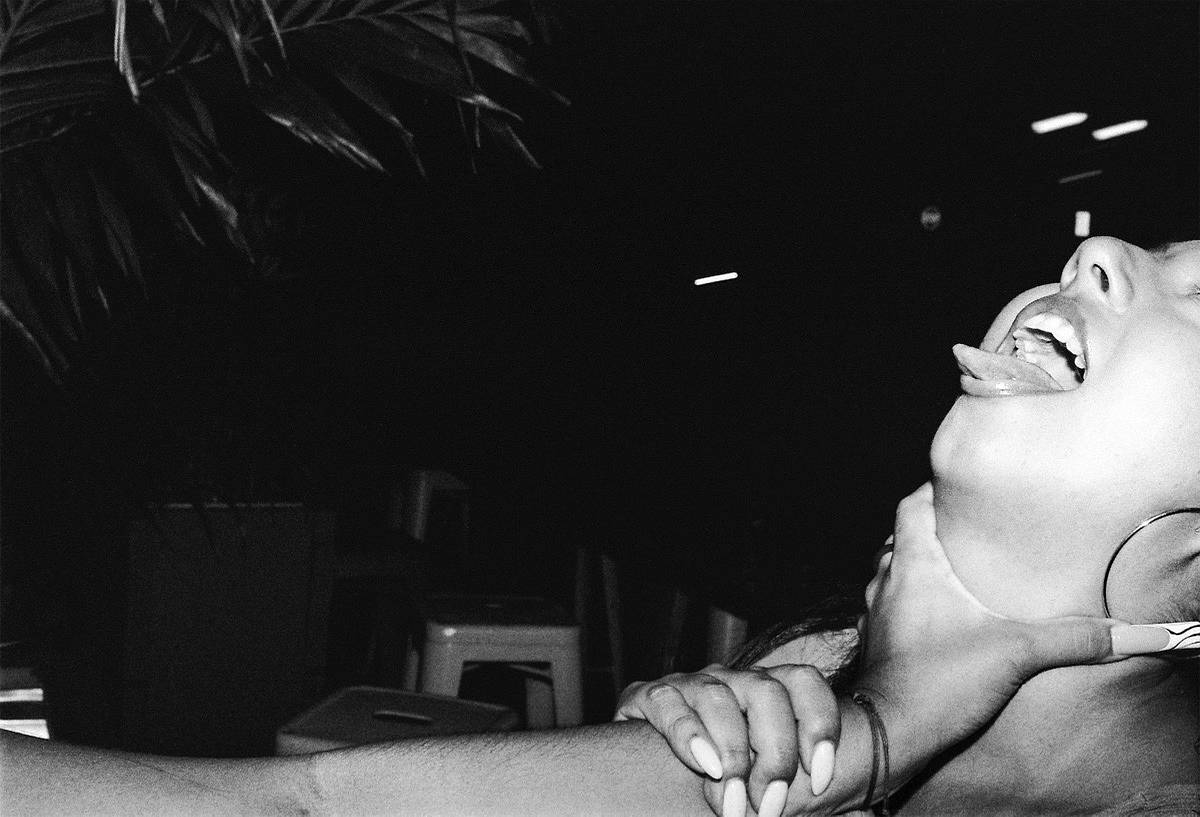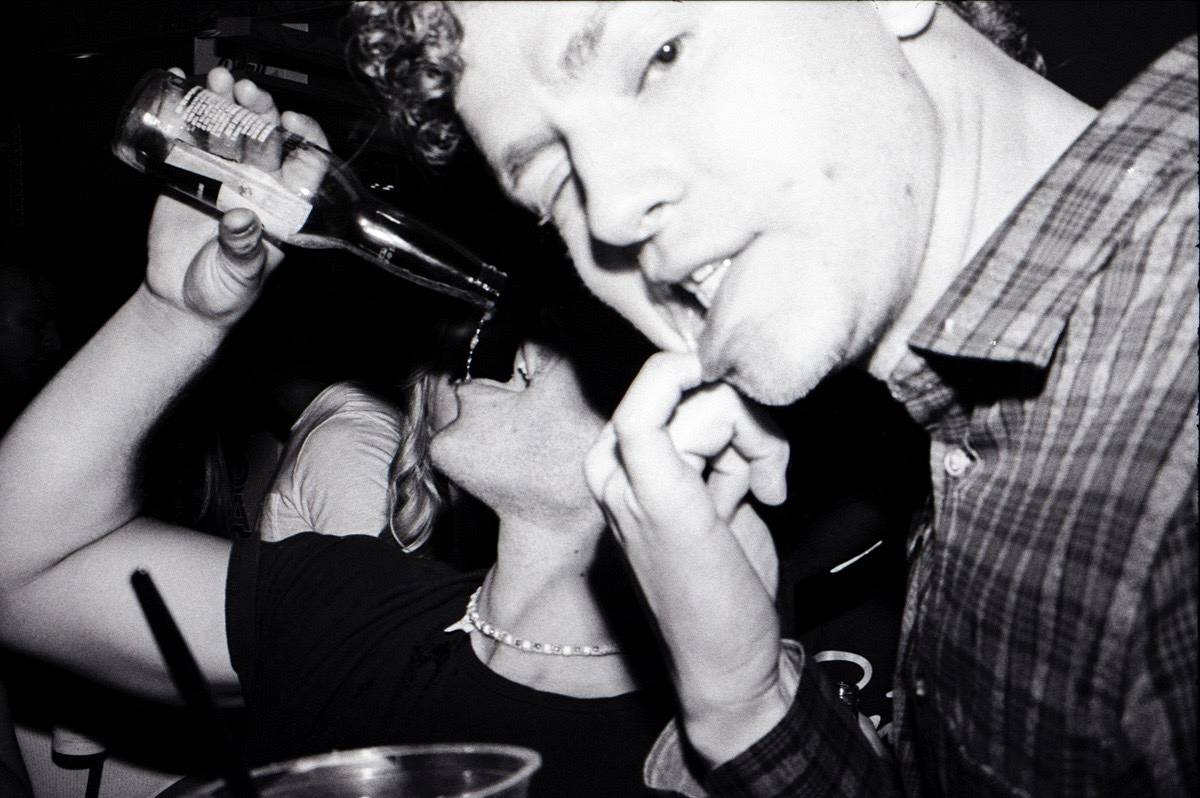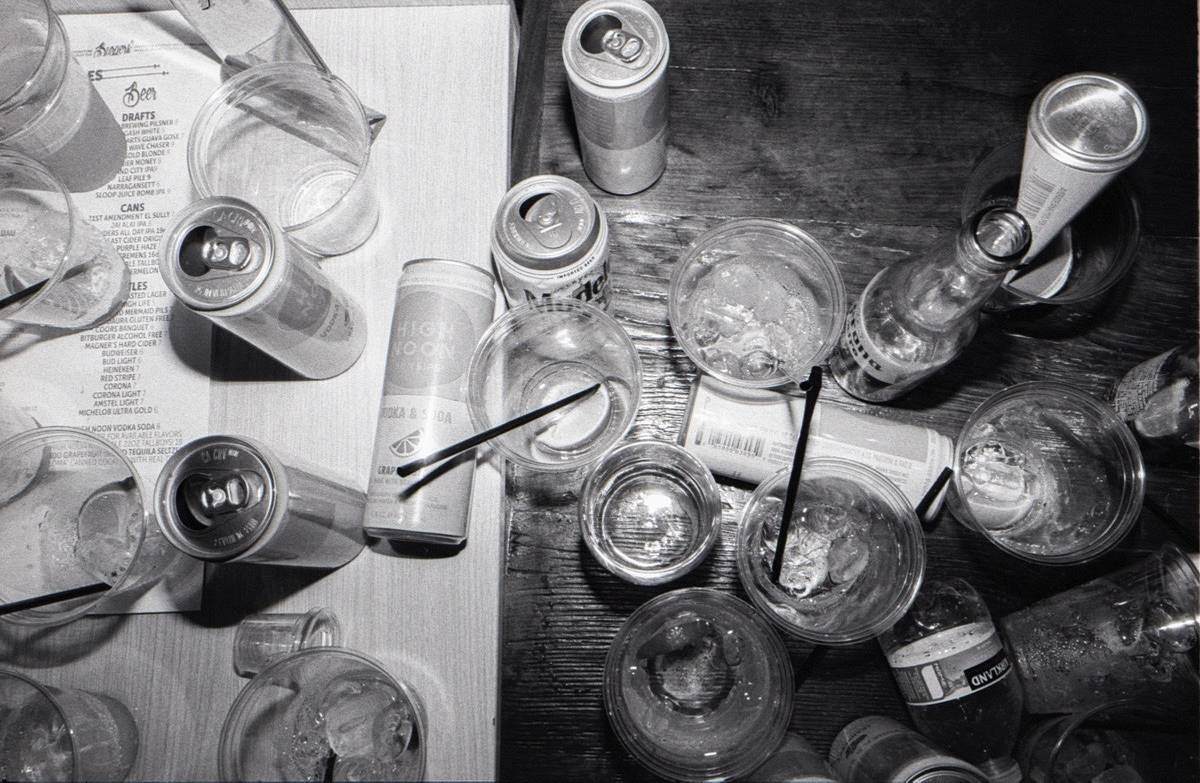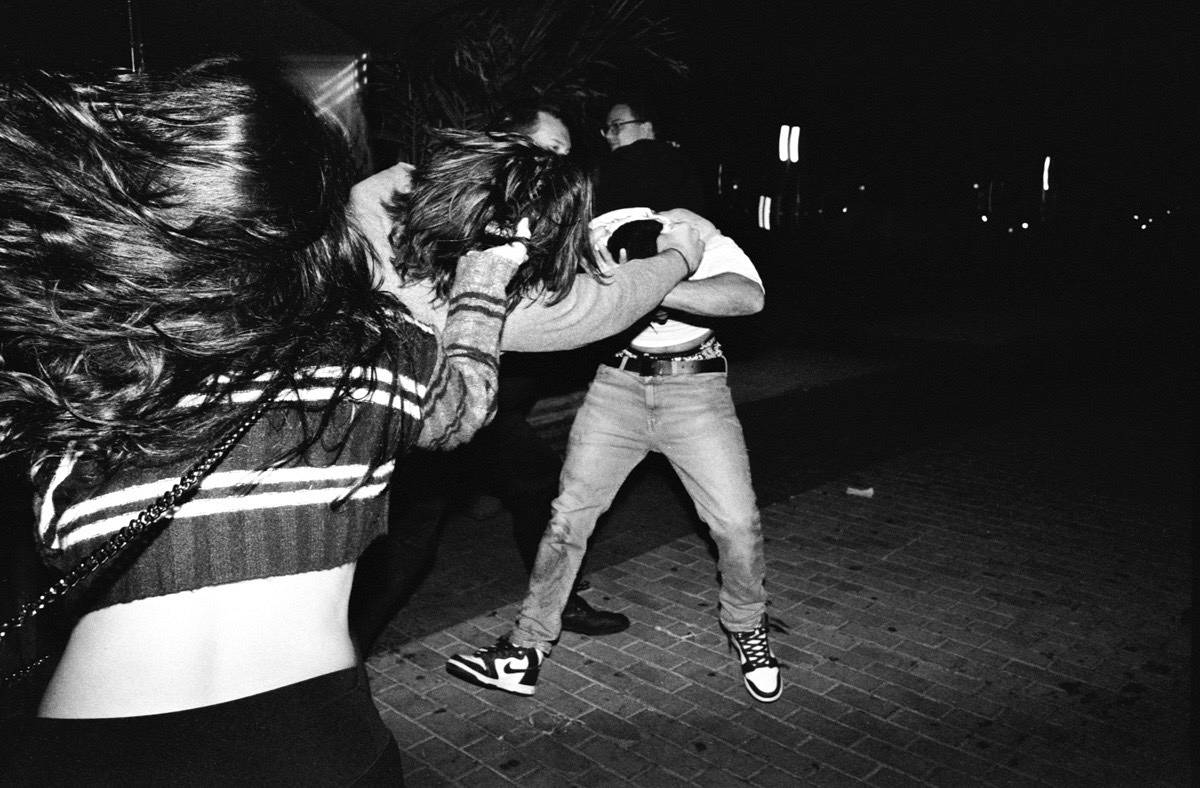Cesar Cordone's "Fly on The Wall, A Dead" Examines the Human Psyche Within the Nightlife Scene
4 Share TweetIn his project statement for "Fly on The Wall, A Dead," Cesar Cordone states, "Instead of just being in 'my moment' I noticed other people’s moments as well. When I realized this, I stayed. This choice seemed freeing in the beginning but in the end, it unraveled in ways I couldn't possibly imagine."
The fully analogue, black-and-white body of work explores what goes on beyond the surface of nightlife in the city and questions every individual's choice of emotional compensation— whether it be through "drinking, smoking, flirting, laughing, crying..."
Cesar is with us today to share the inspiration behind his longterm and ongoing project as well as what it's like feeling like a dead fly on the wall in the NYC nightlife scene.
Hi Cesar, welcome to Lomography Magazine! Can you please start off by telling us a bit about yourself and your work in general?
Hi My name is Cesar Cordone, I'm a photographer based In New York City, My work is mostly street photography but I think of myself as a candid-based photographer. Whether it's photojournalism/documentary or fine art I strongly believe each moment is taken for granted, until it becomes a memory. I became more infatuated with the idea of candidness after discovering the word sonder; each passerby lives a vivid and complex life of one's own. This has helped me take a step back and understand that people in this life have obligations just as myself. When I'm on the streets of New York there's a sense of a rhythm and to be caught in the middle of everyday life and capture those moments in between I then find rhythm.
Can you tell us about the concept of "Fly on The Wall, A Dead" and how the idea came to be?
So back in the earlier half of 2022, I was unstable with my emotions and poisoned by my thoughts. I deliberately ignored and attempted to run away from my problems and found myself in bars. Drowning myself within alcohol every weekend felt like my best and only coping mechanism. I had this sense of freedom from myself and continued this cycle for a period of time. And over time instead of running away ignoring my thoughts and emotions it made a picture more vivid. Instead of just being in “my moment” I noticed other people’s moments as well. When I realized this, I stayed. This choice seemed freeing in the beginning but in the end, it unraveled in ways I couldn't possibly imagine. My body of work shows an individual's choice of compensation (drinking, smoking, flirting, laughing, crying etc.) whether they (or myself) dance around the fact or even through it, we are poisoned by are own thoughts and that every cause truly has an effect on what we do next. And based on however I was feeling I would run into these individuals by chance.
Can you tell us a bit about the process that went into making the project?
Several variables had taken place while undergoing the project. From both a photographic standpoint to not just an observation but an interaction standpoint. For any photographer I think an important question we must ask ourselves is, where can we obtain access? What am I able to do to get myself more invested into said project? For me it was just being there at the bar. Staying in the moment and being 100% invested in what I believed in. Not everyone will believe in what you're doing or understand your motives and that's okay.
The way you go about taking photos really determines how it plays out. If you show yourself as timid and hesitant it'll leave a bad impression and rub off the wrong way to anyone that notices, but if you have a clear understanding of your intentions and are thorough with your choices and show that you aren't looking to do anything bad, then surely people will be inviting and allow you in their space. Mind you, that refers to any situation. I rode with that rule of thumb and from there I was able to have a plan. I knew exactly what time people were coming in, when it would be packed out , what music was being played during a certain time and the after hours; the ones that would stay even after closing. Other than that I would develop my own film, scan, edit and repeat the cycle.
Why is it important for you to document what you describe as "other people’s moments" on nights out with photography as opposed to another kind of artistic medium?
I've thought about this and the only other artistic medium that I would be able to use to document these individuals would be video. And for a while I was open minded about the idea, thinking it would be a good option but I've come to realize that it wouldn't have done much for the project. Video would only show the top layer of my intentions, with photography I was able to go straight into the source. Finding those subtle moments in between and finding beauty within a forgotten moment that only happened for a split second.
How would you say the aesthetics of film photography engage with your work as opposed to digital?
I shot digital for many years and over time I just became very uninspired. I had no motive to continue and I really thought that digital was holding me back. I shared this frustration to one of my professors and he told me to try film. He gave me some Leica magazines and I started asking him questions. He responded by saying, “Figure it out yourself” and from there I bought my first film camera and I was hooked. Film motivated me again to create. I made photography simple. I didn't need to go into a menu, put in a new battery and disengage from what was in front of me. It truly made me find peace within the work I was creating. The fact that I'm able to build an image from scratch by pressing the shutter, going into the darkroom to develop and seeing a print come to life is truly a blessing. The tangibility of it all and the satisfaction that film has created for me – there's no chance that digital can compare.
Can you tell us more about how the time spent on the project has expanded your perspective on the psychological and physiological aspects of your initial concept?
The project taught me discipline. My intention with photography is not to make a good image for the eyes, but to make a good image for the brain. It's to engage viewers on the “Why” and allow us to think about motives and choices. It's not to shame or point fingers at anyone but for us to take a step back and understand where we are ahead of time. Like i've mentioned earlier I found myself within bars because I was looking for some type of vice. I was looking to compensate for my feelings by distracting myself and to have a sense of satisfaction. But in reality I was just hurting myself. It took time to learn discipline and understand my own flaws. Maybe someone you may know is going through the same thing. Maybe someone is looking to compensate for themselves. Not everyone's situation is either good or bad but all end up at the same place. To truly understand it you must experience it. Be mindful.
Did the direction of the project change at all over the course of working on it?
Not necessarily. The project never changed but the environment is what factored my decision to steer away. I was never and I repeat I will never be motivated by money. I'm motivated by the process of creating and showing the world a painted canvas. I didn't want to end the project but it happened abruptly. I was met with new challenges and found myself in a situation that I had no knowledge about so by taking a step back I was able to educate myself. That step back helped me acknowledge my own patterns and tendencies and I was able to correct myself for the most part. I see it as a blessing in disguise.
Where do you see yourself and your work going from here?
I was given advice that there's a place for everyone. I see myself and my work anywhere that I'm welcomed. Anywhere that I'm able to share my perspective and with anyone that I'm able to share my values with. I have no limit.
Anything else you'd like to share?
Thank you for having me and i'm very grateful for this opportunity with Lomography Magazine!
If you're interested in keeping up with Cesar and his work, make sure to check out his Instagram and website.
written by eloffreno on 2023-08-27 #culture #people #night #nightlife #parties #city-life #nyc #new-york-city #fit #fashion-institute-of-technology












































No Comments